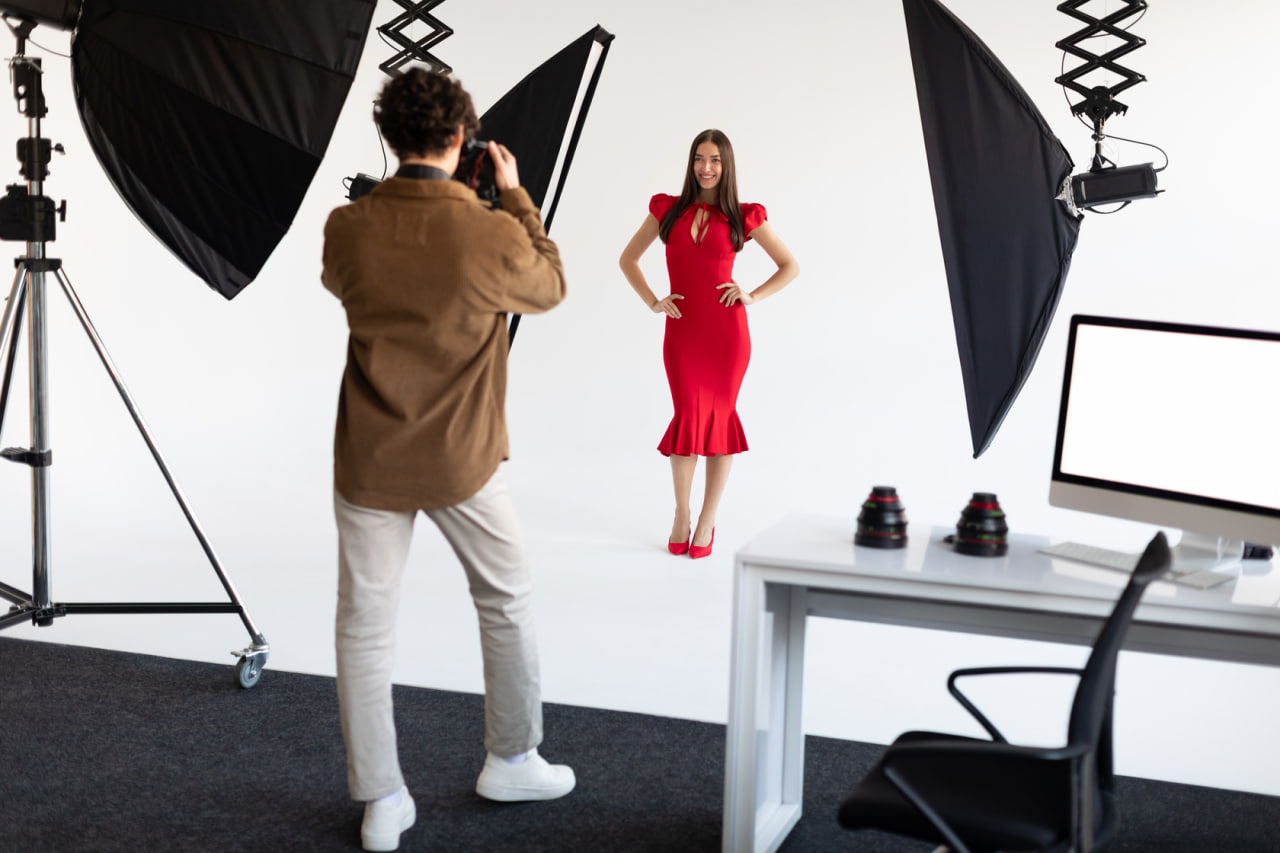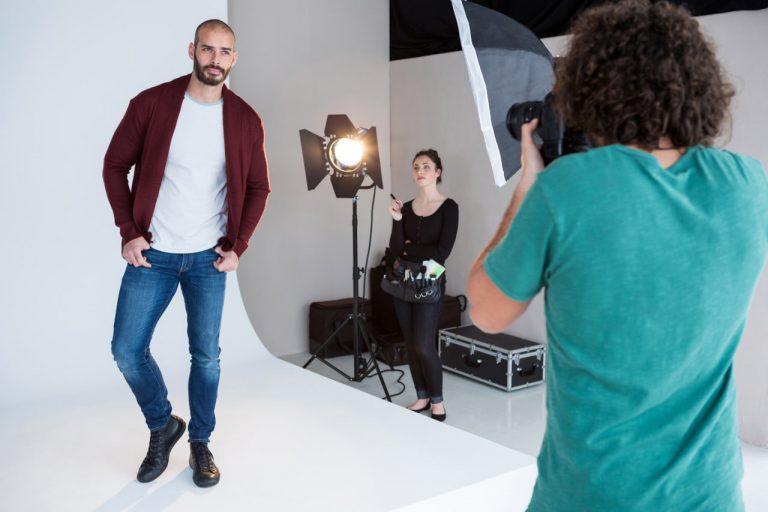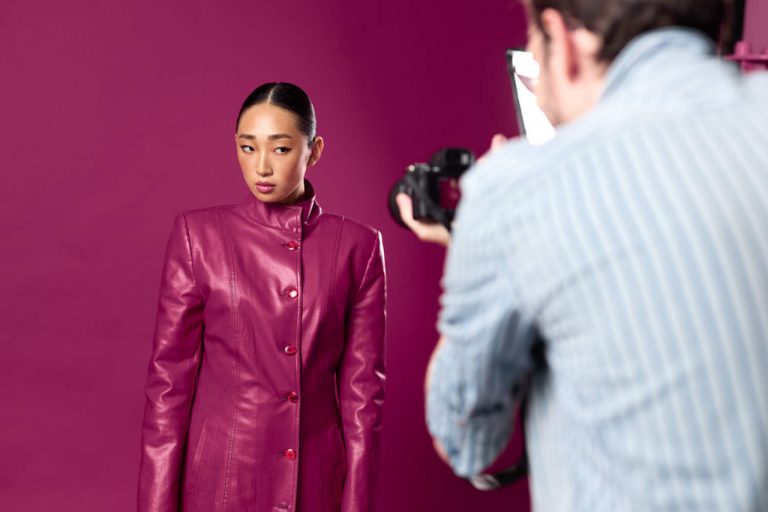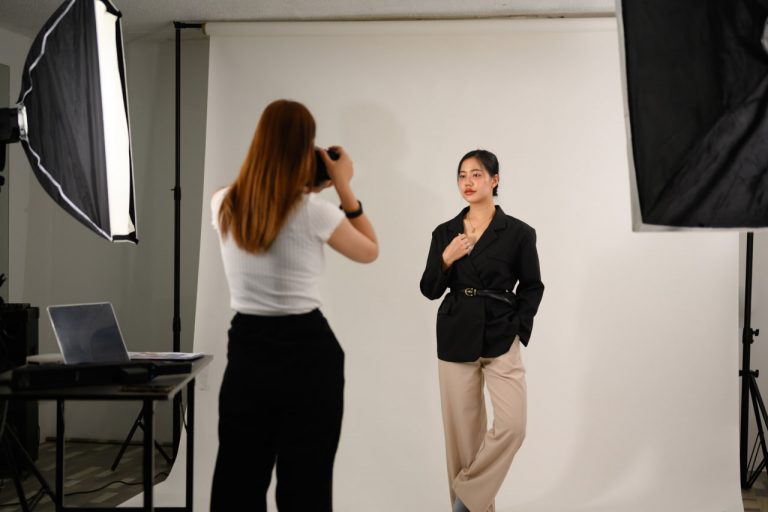Monday to Saturday - 8:00 -17:30

Lighting is the cornerstone of fashion photography. It shapes mood, emphasizes texture, highlights contours, and brings garments to life. A photographer’s ability to manipulate light effectively distinguishes an amateur from a professional. Understanding lighting principles, mastering both natural and artificial sources, and knowing how to use them creatively are essential skills for anyone pursuing fashion photography.
Understanding the Fundamentals of Light
Before diving into advanced techniques, it’s crucial to understand the basic properties of light. Light has intensity, direction, quality, and color. Each property affects how a subject appears in a photograph.
- Intensity determines how bright or dim the subject appears and affects exposure.
- Direction controls shadows, highlights, and the overall mood of an image.
- Quality refers to hard versus soft light, which influences the sharpness of shadows and the texture of the subject.
- Color impacts the atmosphere and emotional tone of a photo. Using warm or cool light can dramatically alter the feeling conveyed.
Natural Light Techniques
Natural light is one of the most versatile and accessible tools for fashion photographers. Shooting outdoors allows photographers to work with sunlight and ambient light, which can create soft, flattering effects or dramatic contrast depending on the time of day.
Golden hour—the period shortly after sunrise or before sunset—is prized for its warm, diffused light, which enhances skin tones and fabric textures. Overcast days produce soft, even light that minimizes harsh shadows and highlights details in clothing. Reflectors, diffusers, and scrims can be used to modify natural light, directing it, softening it, or adding fill where needed.
Mastering Studio Lighting
Studio lighting provides complete control over every aspect of illumination, making it indispensable for fashion shoots. Photographers use a combination of key lights, fill lights, backlights, and modifiers to achieve the desired effect.
- Key light is the primary source of illumination and sets the overall exposure.
- Fill light softens shadows created by the key light, ensuring balanced lighting.
- Backlight separates the subject from the background, adding depth and dimension.
- Modifiers such as softboxes, umbrellas, and grids allow precise control over light spread, softness, and direction.
Understanding how to position and adjust these elements is critical for creating consistent, professional results. Experimentation is key—subtle changes in angle or intensity can dramatically alter the mood and impact of an image.
Creative Lighting Techniques
Fashion photography is as much about artistic expression as technical precision. Creative lighting techniques can transform ordinary shots into visually stunning works of art.
- High-key lighting uses bright, even illumination for a clean, airy, and modern aesthetic.
- Low-key lighting employs strong shadows and contrast for dramatic, moody images.
- Color gels and colored lights can evoke emotion, highlight fashion themes, or add a stylistic signature to your work.
- Backlighting and rim lighting create silhouettes, halo effects, or emphasize contours, adding dimension to garments and models.
Experimenting with unconventional angles, shadows, and reflections encourages innovation and helps photographers develop a distinct visual style.
Post-Production and Lighting Enhancements
Even the most expertly captured photograph can benefit from careful post-production adjustments. Editing software allows photographers to fine-tune exposure, contrast, highlights, shadows, and color balance. Enhancing or correcting lighting in post-production ensures that the final image communicates the intended mood and showcases the fashion in its best light.



